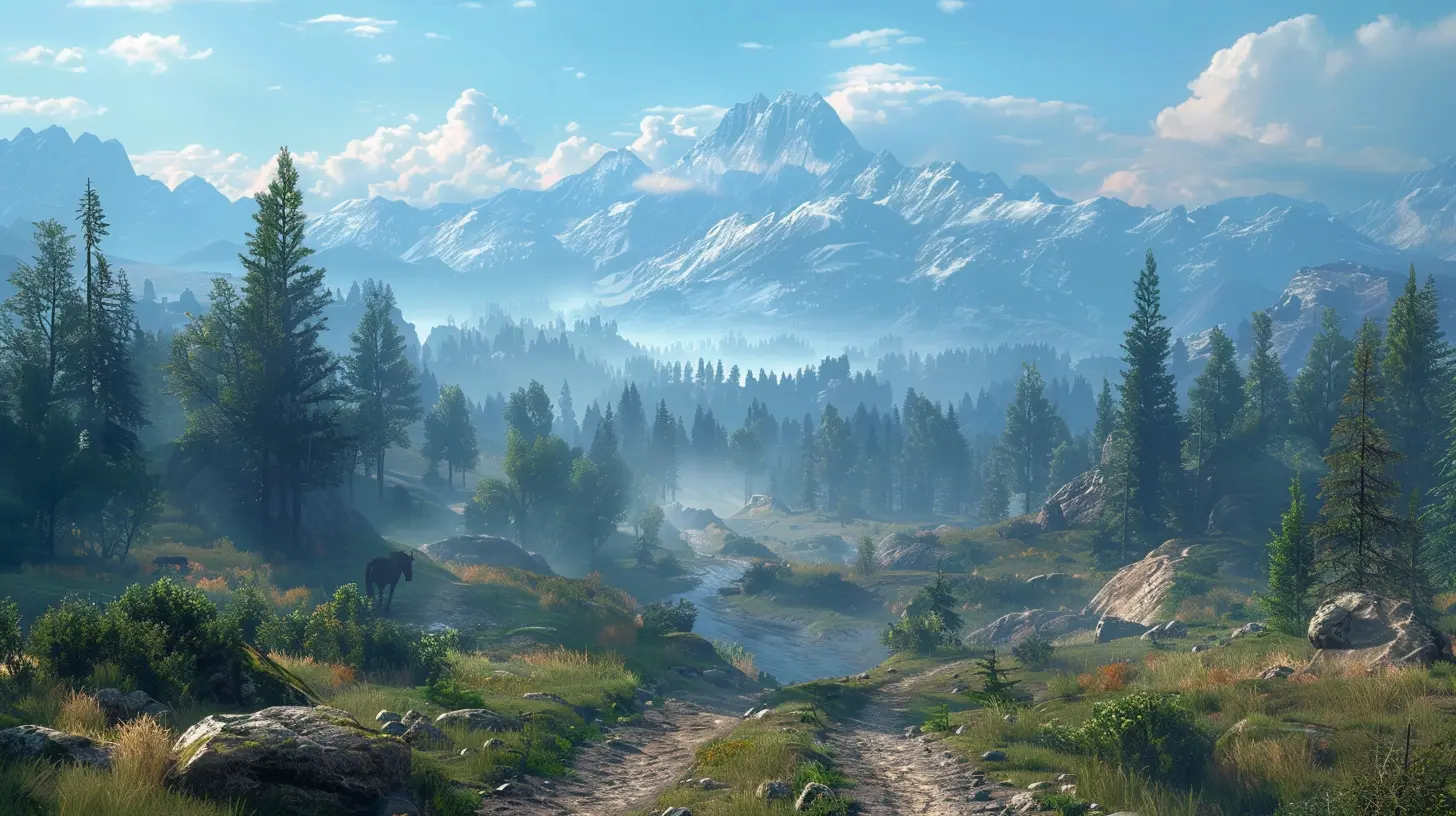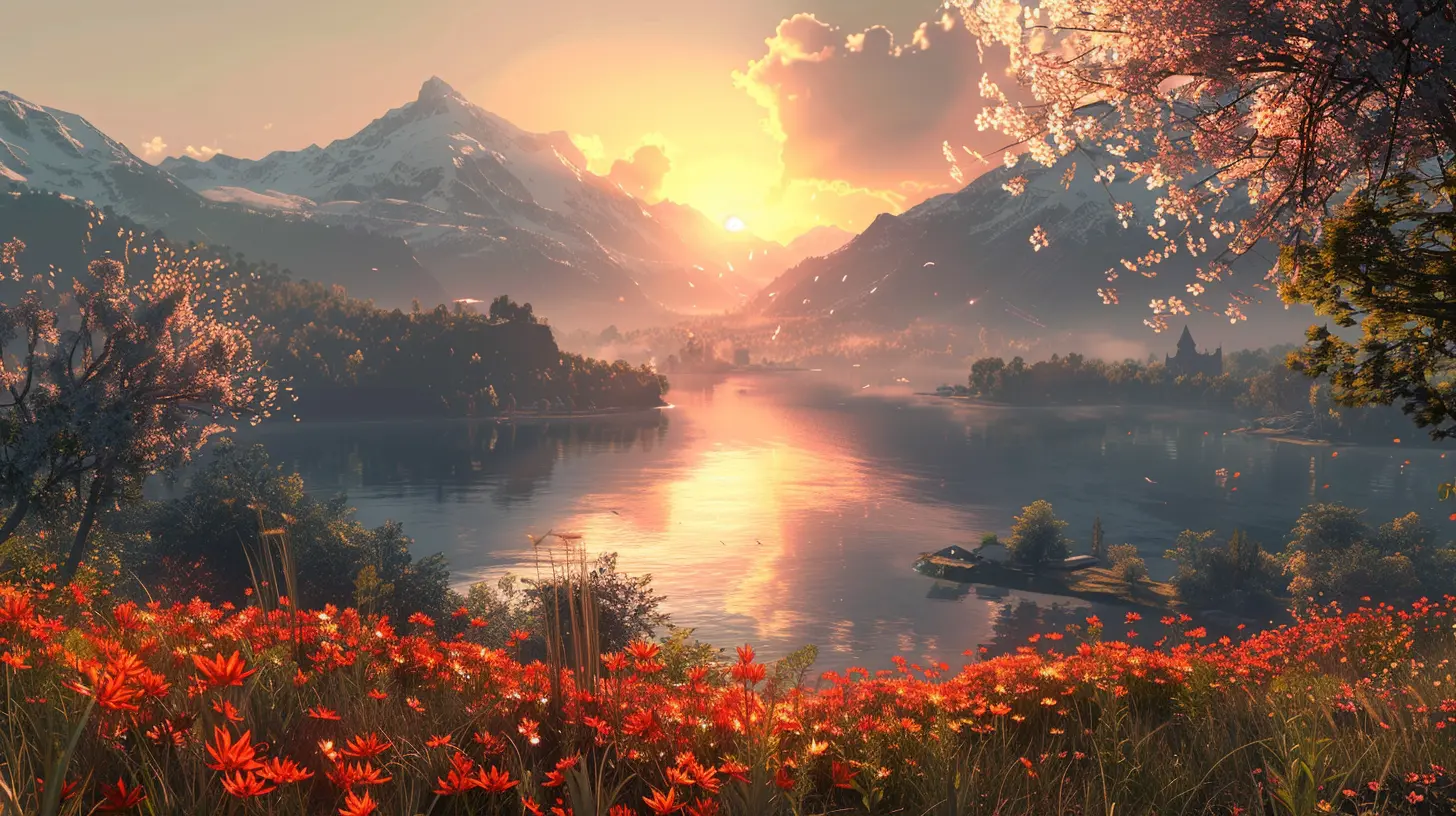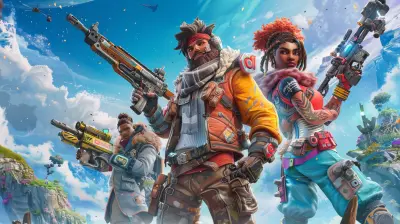How Realism Is Pushing the Boundaries of Open World Environments
24 September 2025
In recent years, open-world games have gone from being vast, blank canvases to immersive, living, breathing universes. But have you ever wondered what makes modern open-world games feel so gripping and believable? It’s realism. Developers are now pushing the boundaries of what we consider “real” in gaming, almost as if they're building entire worlds right under our noses. Let’s dive into how realism is redefining open-world environments—and why it’s so darn exciting for gamers like us. 
Realism: The Game-Changer in Open Worlds
Let’s be honest—back in the day, open-world games were more about quantity than quality, weren’t they? Sure, you had the freedom to explore, but everything felt shallow, static, and a bit artificial. Remember roaming in games where NPCs repeated the same one-liners like broken records? Yeah, we’ve all been there.Fast-forward to today, and things look vastly different. Developers are now laser-focused on crafting realistic environments that go beyond just "looking pretty." It's not just about adding high-resolution textures or realistic lighting (though those help, of course); it's about building worlds that feel alive, where the tiniest details make you stop in awe. 
The Role of Graphics in Realistic Open Worlds
Alright, let’s start with the obvious: graphics. Stunning visuals are often the first thing that catches your eye, right? Games like Red Dead Redemption 2 and Horizon Forbidden West have set the bar sky-high. These titles don’t just recreate reality; they elevate it.Take weather systems, for example. In Red Dead Redemption 2, rain isn’t just a visual gimmick—it affects how your character moves, how your horse behaves, and even how NPCs interact with the world. This attention to detail immerses you so fully that you almost forget you're sitting on your couch and not riding through a downpour.
But it’s not just about the weather. Developers are also bringing landscapes to life. Whether it’s the way sunlight filters through tree branches or how puddles reflect the sky after a storm, these small touches create a sense of wonder that’s hard to describe but impossible to ignore.
AI and NPCs: Making Worlds Feel Alive
Let’s talk NPCs. Remember when townsfolk were just emotionless mannequins strolling around aimlessly? Those days are (thankfully) long gone. Game developers are now using advanced AI to create NPCs with routines, emotions, and even stories of their own.Take The Elder Scrolls V: Skyrim, for instance. Even though it's over a decade old, its Radiant AI system gave NPCs a sense of purpose. Fast-forward to modern games like Cyberpunk 2077 or The Witcher 3, and the evolution is jaw-dropping. NPCs now go about their daily lives—shopping, working, gossiping, or even reacting to your actions in sometimes unpredictable ways.
For instance, in Cyberpunk 2077, if you bump into a pedestrian, they don’t just stand there; they might curse at you, stumble, or even run away. It's details like this that make a world feel dynamic and reactive, as if you're not just playing the game, but actually existing within it. 
Dynamic Ecosystems: Nature at its Best
Have you ever stopped mid-quest just to watch wildlife? If so, you’re not alone. One of the coolest trends in open-world games is the addition of dynamic ecosystems that behave as naturally as they would in real life.Take Far Cry or Horizon Forbidden West, for example. These games have wildlife that doesn’t just exist as cannon fodder; they interact with each other and their environment. Wolves might hunt deer, birds might take off as you approach, and fish swim in patterns that are weirdly mesmerizing to watch.
And it goes beyond wildlife. In some games, destroying a tree or altering terrain can trigger chain reactions. Chop down too many trees, and you might disrupt local wildlife or even trigger adverse climate effects. Realism isn't just visual—it's systemic. And that's what makes it so fascinating.
Soundscapes: The Unsung Hero of Realism
Quick question: ever played a game where you close your eyes and just listen? If you haven’t, you’re missing out. Realistic soundscapes are a massive part of open-world immersion but often fly under the radar.In games like Ghost of Tsushima or The Last of Us Part II, every rustling leaf, distant howl, or creaking floorboard adds an extra layer of depth. Imagine walking through a dense forest where you hear birds chirping during the day, crickets at night, and the crack of thunder during a sudden storm. Goosebumps, right?
These auditory cues don’t just enhance the environment—they guide your emotions. Whether it’s the eerie silence before a boss fight or the calming hum of a bustling town, sound design bridges the gap between the virtual and the real.
The Role of Physics and Interactions
Graphics and sound are only part of the equation. To truly push realism, games need realistic physics and interactions. After all, what’s an open world if you can’t interact with it in a meaningful way?Games like The Legend of Zelda: Breath of the Wild have completely changed the game here. Who knew cooking over an open fire or using metal weapons during a lightning storm could feel so… natural? It’s these small, logical interactions that make a world feel cohesive.
Water flows downhill, fire spreads in grasslands, and wind affects your arrows—you start thinking about the environment the same way you would in real life. It’s not about just following game mechanics; you’re interacting with a living system. And honestly, that’s pretty mind-blowing.
How Realism Enhances Storytelling
Let’s not forget the impact of realism on storytelling. A believable world makes every narrative beat hit harder. When the environment mirrors the stakes of the story, it pulls you in that much deeper.Take The Last of Us Part II, for example. The game's hyper-realistic world amplifies its emotional storytelling. Whether you’re sneaking through a crumbling city or walking through a serene forest, the environment reflects the mood. It’s like the setting becomes a character in its own right, influencing how the story makes you feel.
Challenges Developers Face
Here’s the thing—crafting realistic open worlds isn’t easy. It’s resource-intensive and time-consuming. Developers face challenges like balancing realism with gameplay, preventing uncanny valley effects, and ensuring these worlds run smoothly on hardware that varies wildly from player to player.Take Cyberpunk 2077. It aimed sky-high but stumbled on performance issues at launch. Realism is no good if it breaks immersion with bugs, right? Successful open-world games strike a delicate balance between pushing boundaries and delivering a polished experience.
What Does the Future Hold?
So, where do we go from here? As technology like photogrammetry, AI, and ray tracing continues to evolve, the line between virtual and real worlds will blur even further. Imagine open-world games where NPCs feel indistinguishable from real people or where ecosystems evolve over in-game years.With virtual reality (VR) and augmented reality (AR) also gaining traction, we could someday "step into" these worlds for real. How cool would it be to explore a hyper-realistic open world in VR, where every decision feels tactile and meaningful?
Conclusion: Realism Is Redefining Gaming
Realism is no longer just a buzzword—it’s a revolution. It’s what elevates open-world games from "just another map to explore" to unforgettable experiences that stay with us long after we’ve stopped playing. From photorealistic graphics and lifelike NPCs to dynamic ecosystems and interactive physics, the push for realism is making open-world environments more captivating than ever.And while there’s still a long way to go, one thing’s for sure: the future of gaming has never looked—or felt—more real.
all images in this post were generated using AI tools
Category:
Open World GamesAuthor:

Whitman Adams
Discussion
rate this article
1 comments
Edith Vaughn
Great insights on the evolving role of realism in open world games! It's fascinating to see how these advancements enhance player immersion and interaction. Looking forward to the next generation of gaming experiences that push these boundaries even further.
September 27, 2025 at 3:39 AM

Whitman Adams
Thank you! I agree—advancements in realism are truly transformative for player engagement, and I’m excited to see where the next generation takes us!


